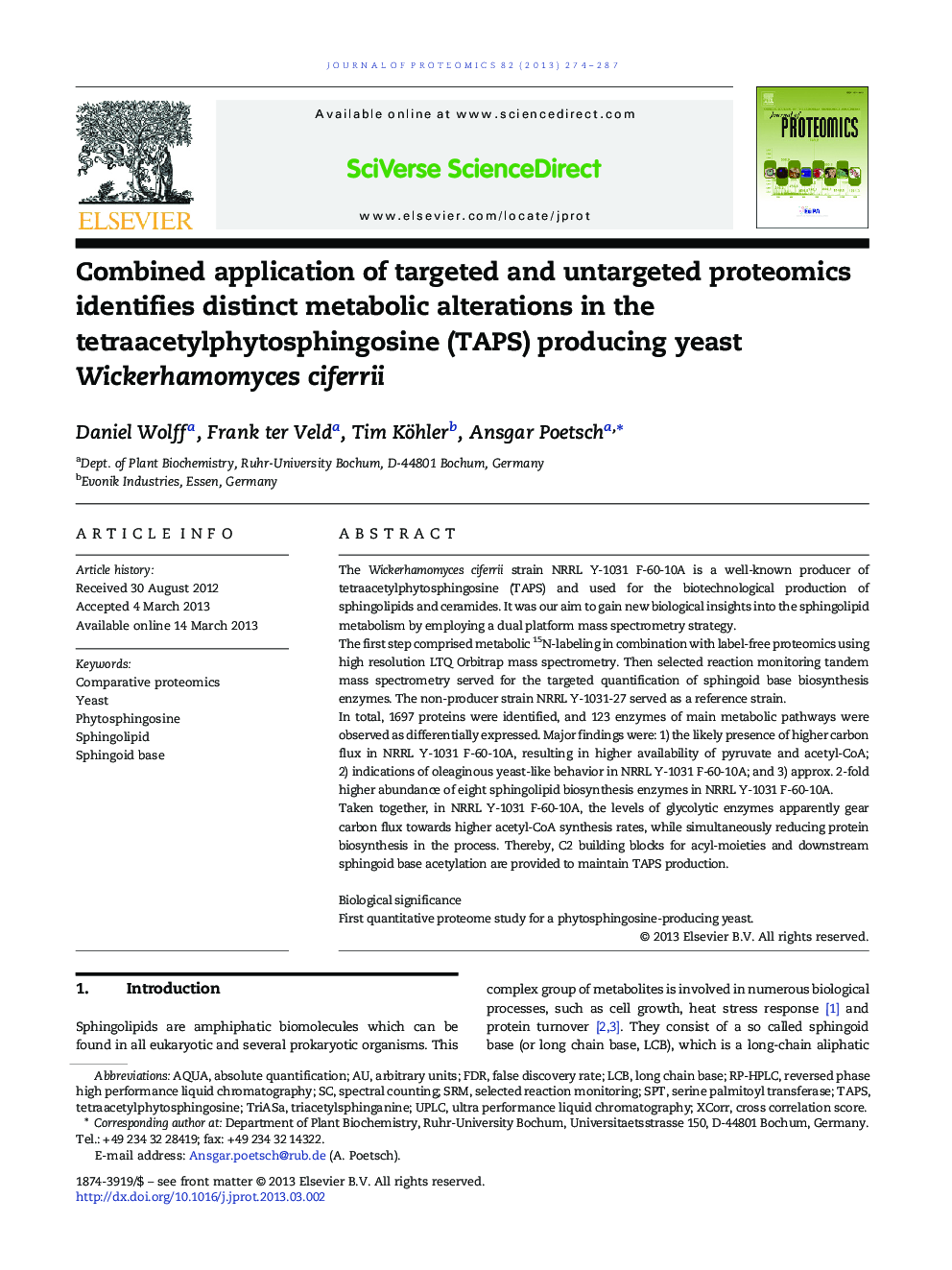| کد مقاله | کد نشریه | سال انتشار | مقاله انگلیسی | نسخه تمام متن |
|---|---|---|---|---|
| 1226190 | 1494798 | 2013 | 14 صفحه PDF | دانلود رایگان |

• Combined targeted/untargeted approach:
• allowed comprehensive coverage of central metabolic enzymes
• resulted in complete coverage of relevant phytosphingosine biosynthesis pathway
• revealed oleaginous yeast-like behavior for the general physiology of producing strain
The Wickerhamomyces ciferrii strain NRRL Y-1031 F-60-10A is a well-known producer of tetraacetylphytosphingosine (TAPS) and used for the biotechnological production of sphingolipids and ceramides. It was our aim to gain new biological insights into the sphingolipid metabolism by employing a dual platform mass spectrometry strategy.The first step comprised metabolic 15N-labeling in combination with label-free proteomics using high resolution LTQ Orbitrap mass spectrometry. Then selected reaction monitoring tandem mass spectrometry served for the targeted quantification of sphingoid base biosynthesis enzymes. The non-producer strain NRRL Y-1031-27 served as a reference strain.In total, 1697 proteins were identified, and 123 enzymes of main metabolic pathways were observed as differentially expressed. Major findings were: 1) the likely presence of higher carbon flux in NRRL Y-1031 F-60-10A, resulting in higher availability of pyruvate and acetyl-CoA; 2) indications of oleaginous yeast-like behavior in NRRL Y-1031 F-60-10A; and 3) approx. 2-fold higher abundance of eight sphingolipid biosynthesis enzymes in NRRL Y-1031 F-60-10A.Taken together, in NRRL Y-1031 F-60-10A, the levels of glycolytic enzymes apparently gear carbon flux towards higher acetyl-CoA synthesis rates, while simultaneously reducing protein biosynthesis in the process. Thereby, C2 building blocks for acyl-moieties and downstream sphingoid base acetylation are provided to maintain TAPS production.Biological significanceFirst quantitative proteome study for a phytosphingosine-producing yeast.
Figure optionsDownload high-quality image (100 K)Download as PowerPoint slide
Journal: Journal of Proteomics - Volume 82, 26 April 2013, Pages 274–287